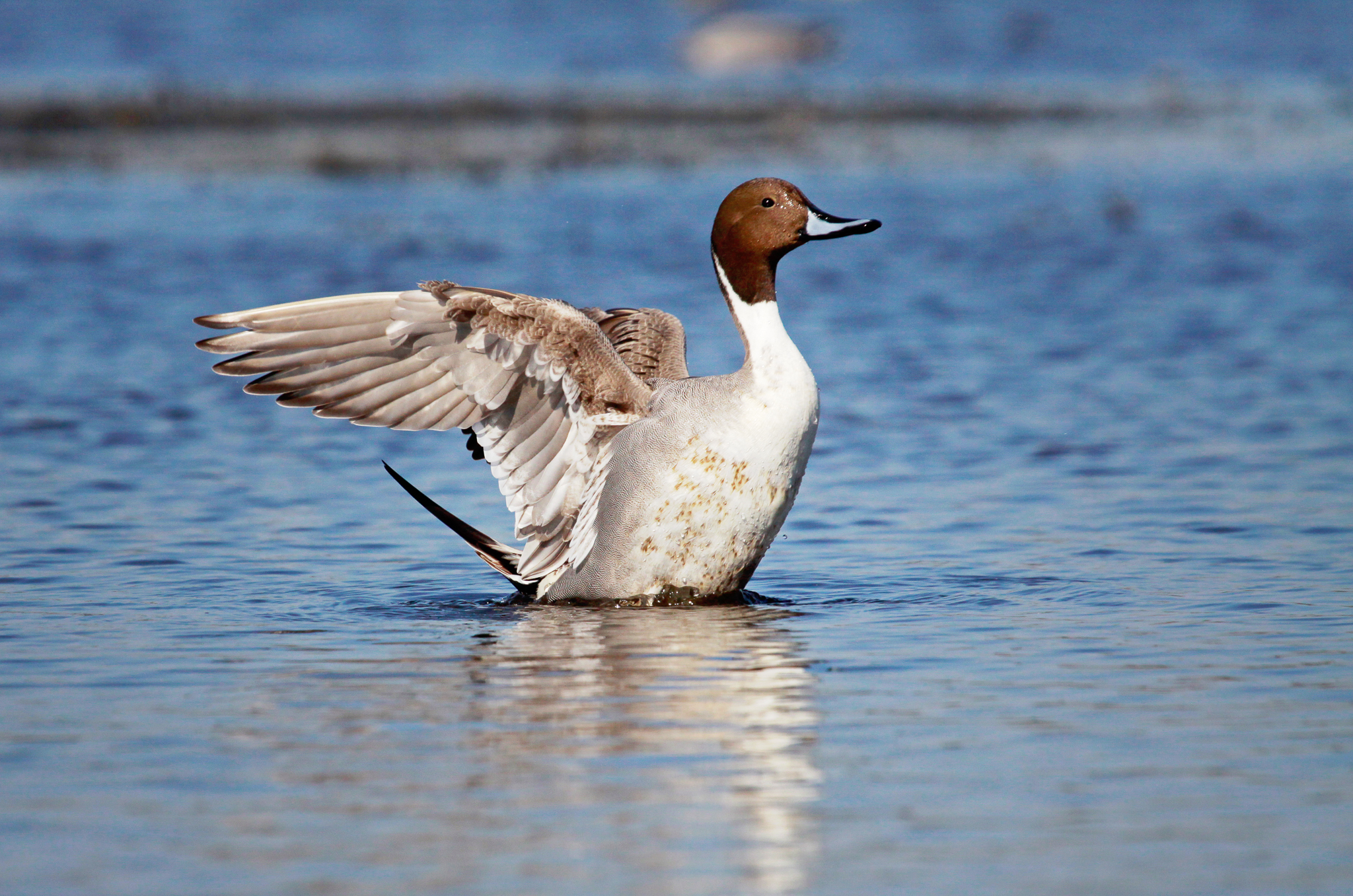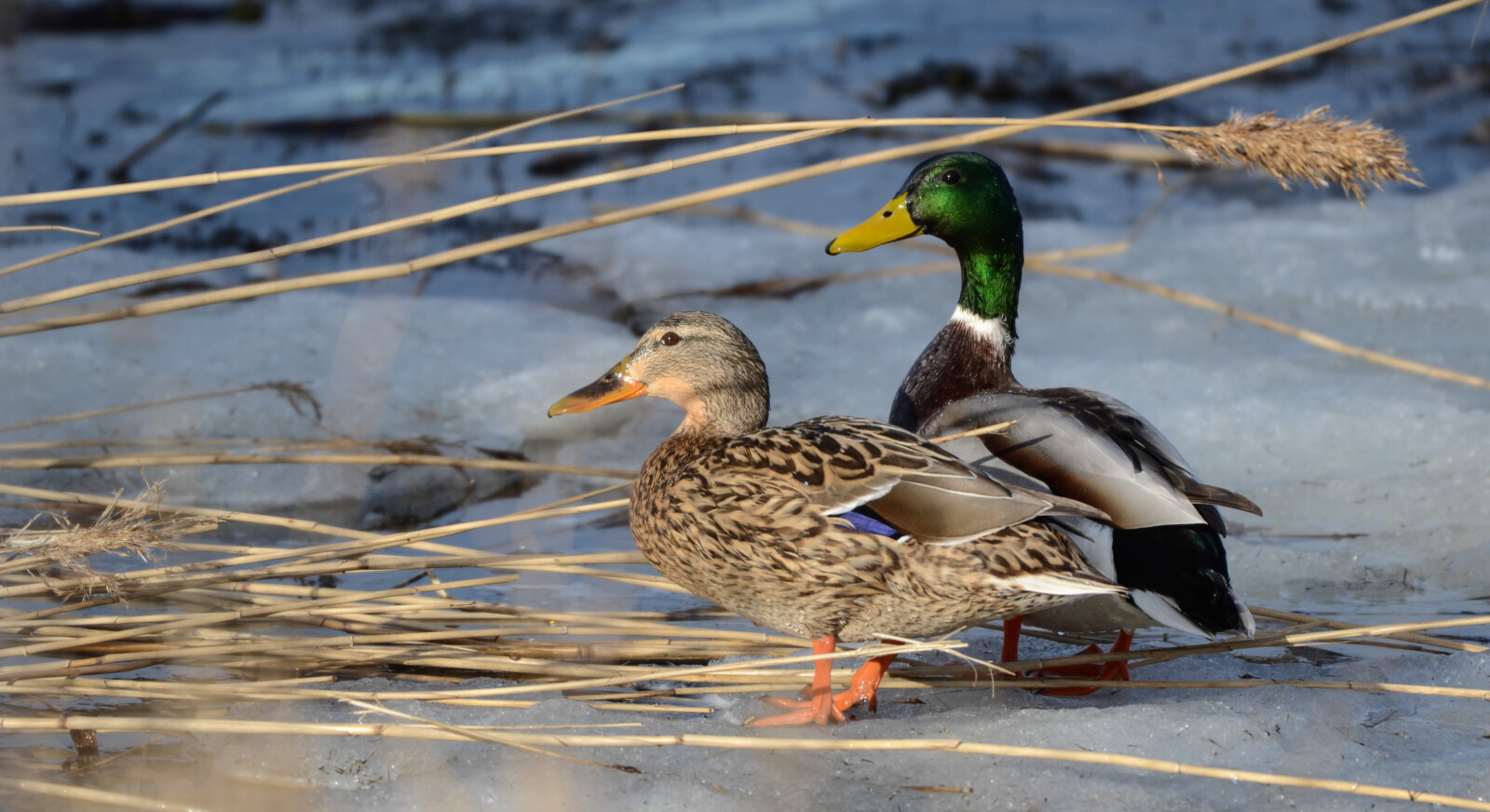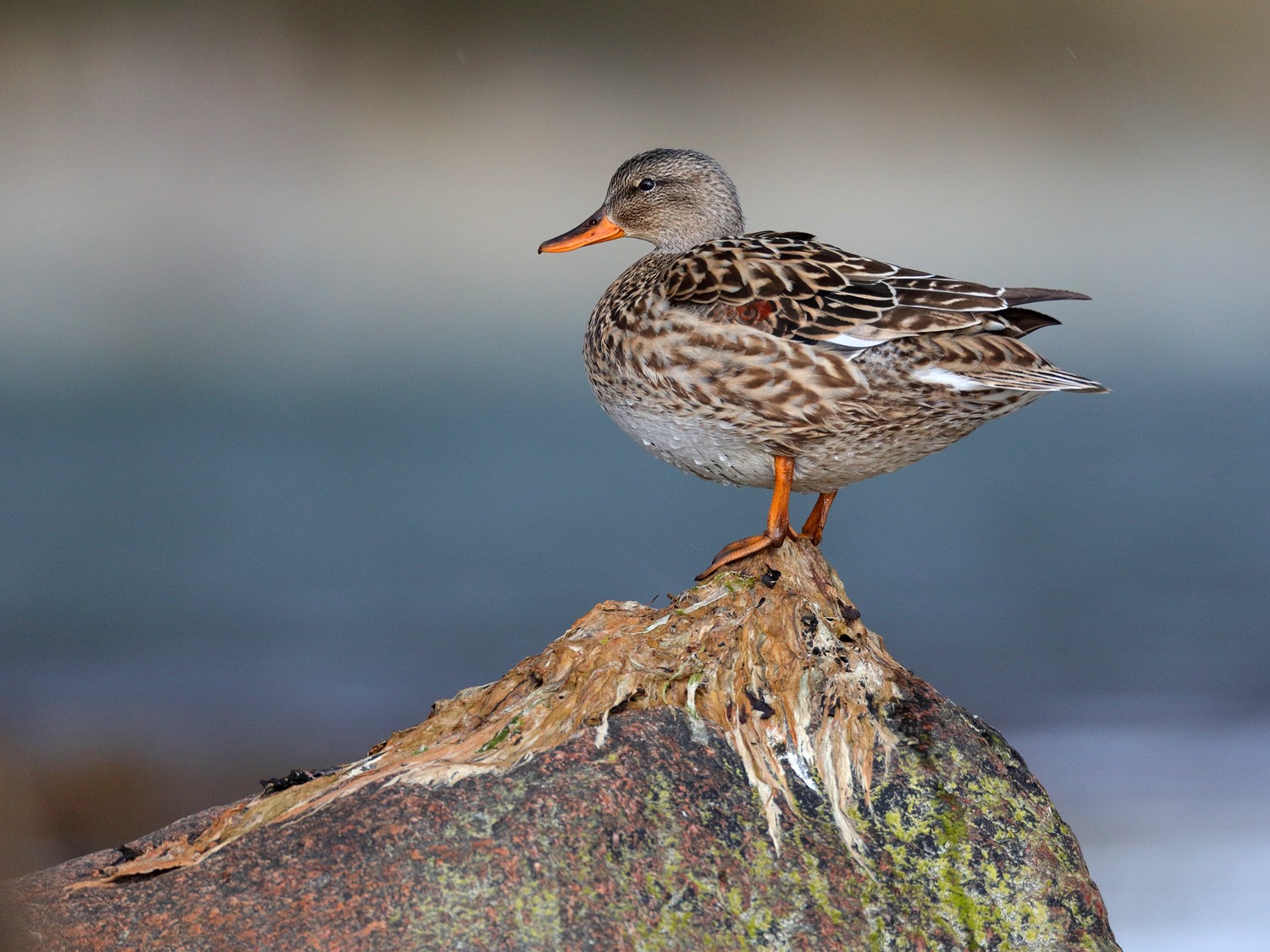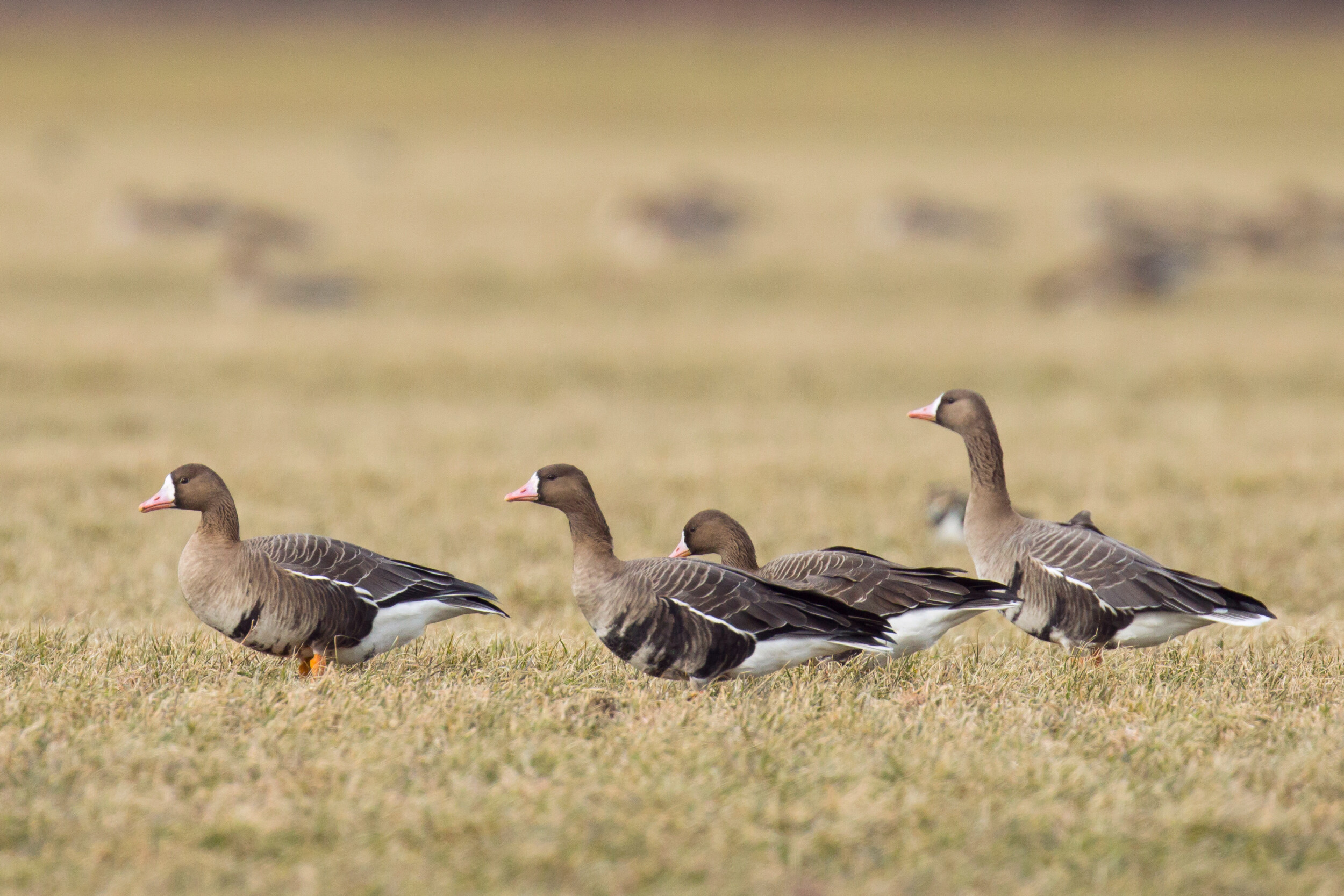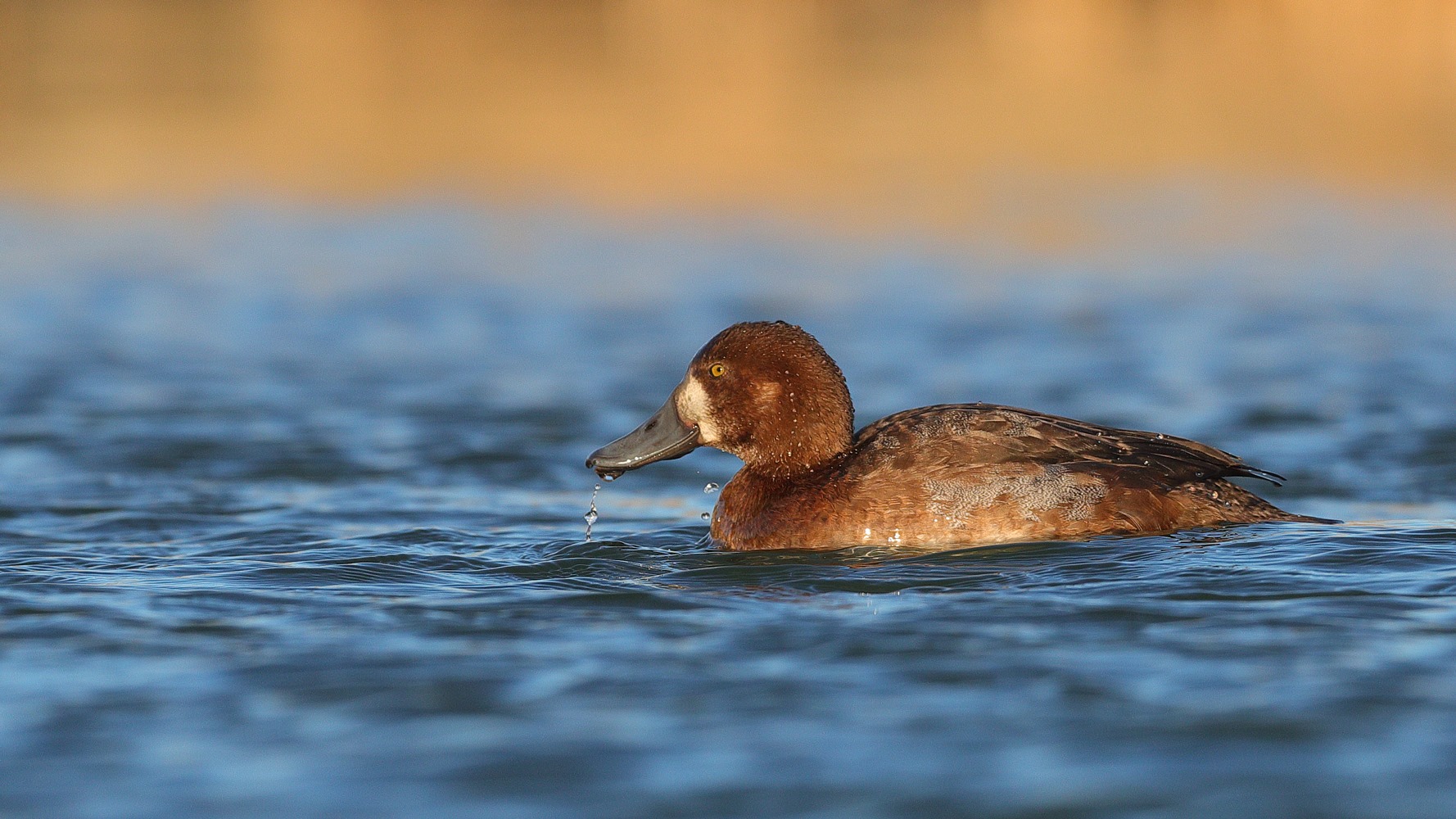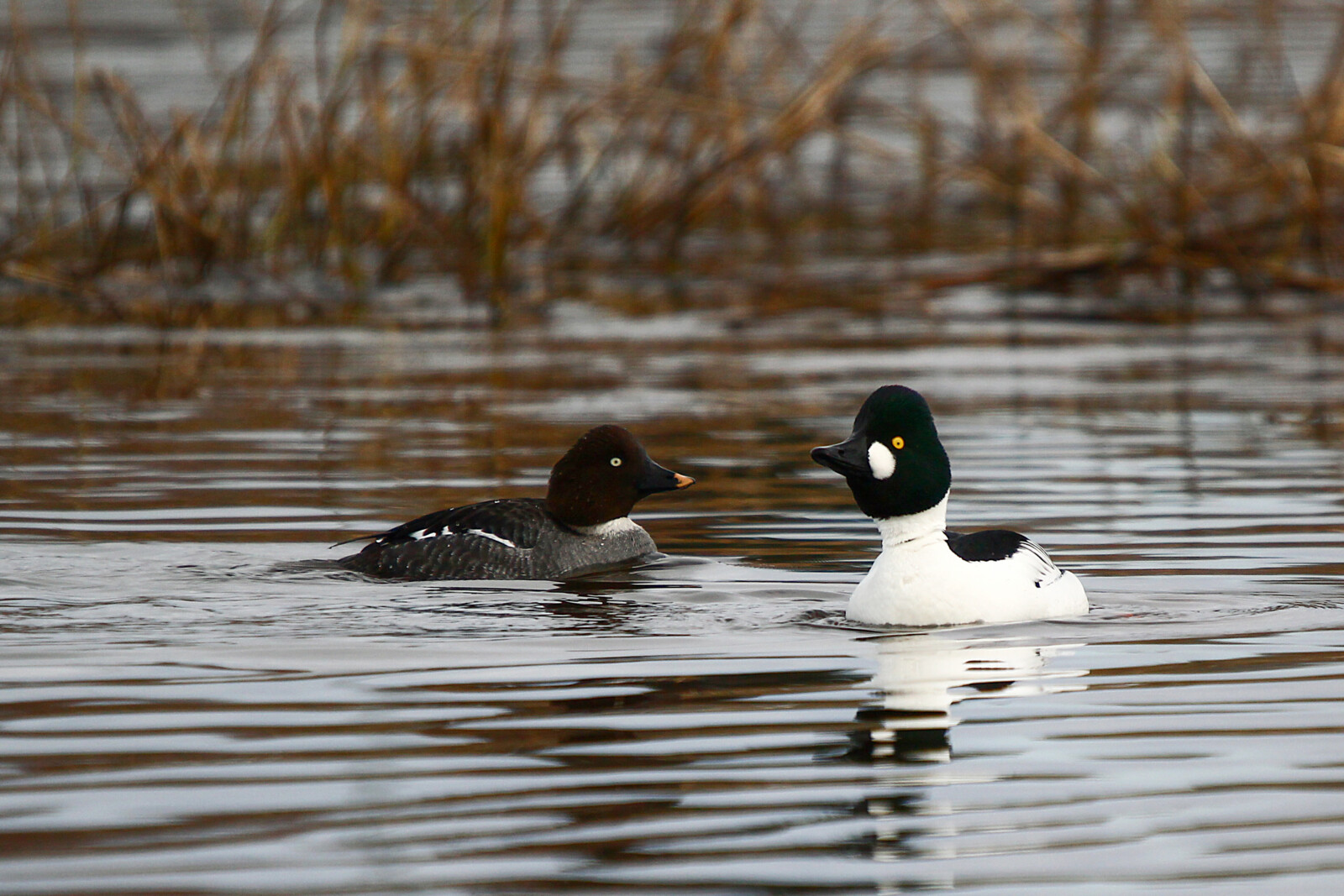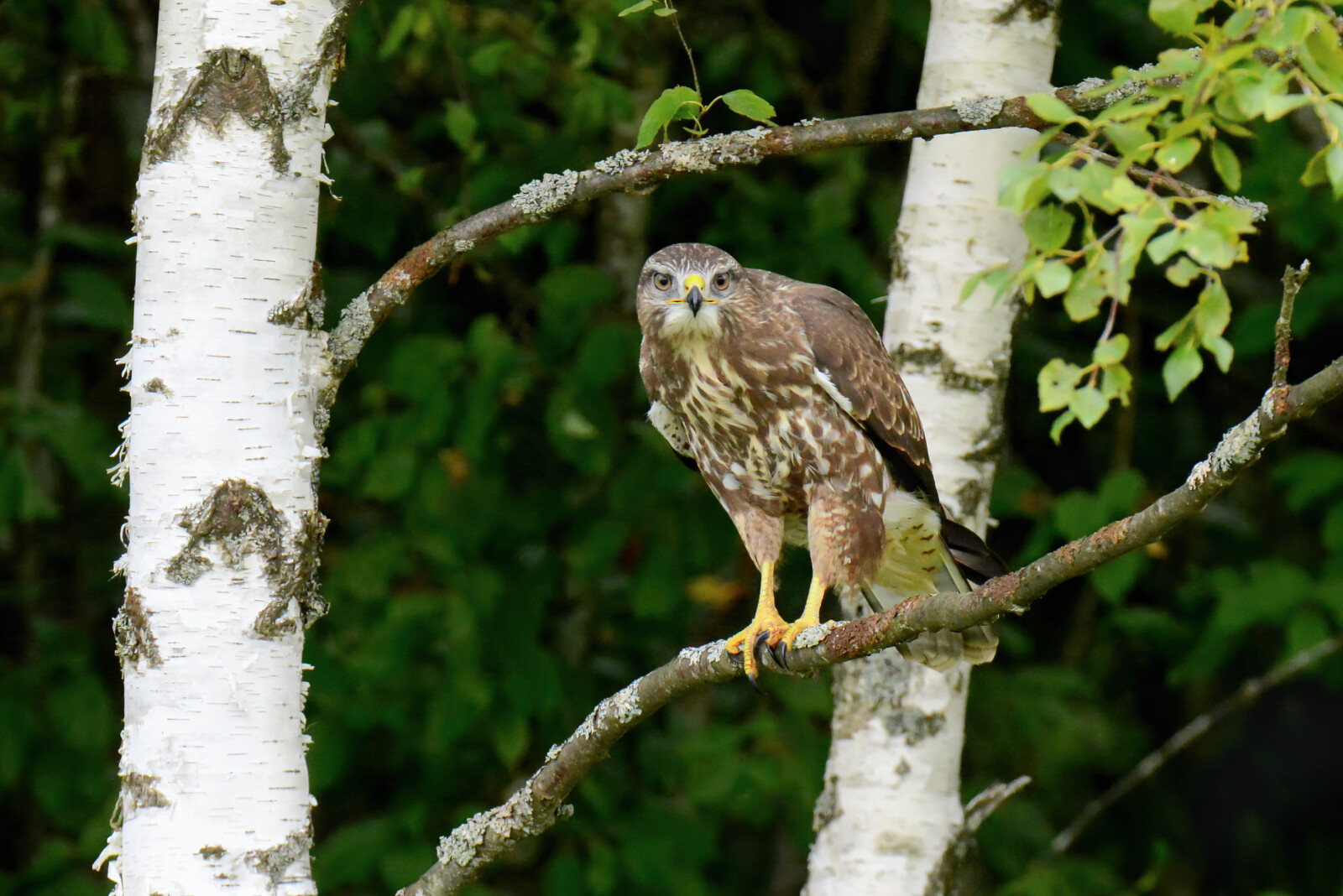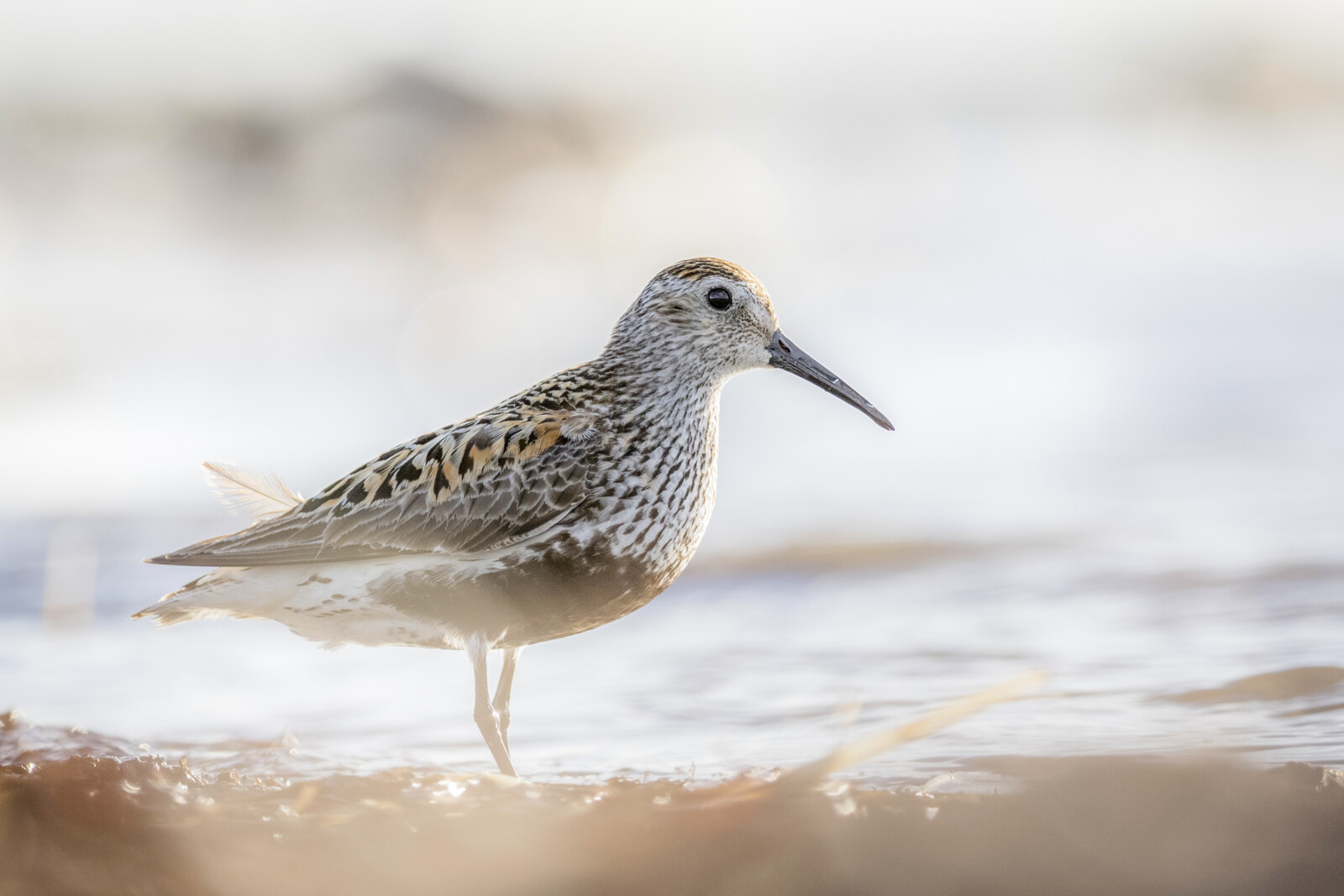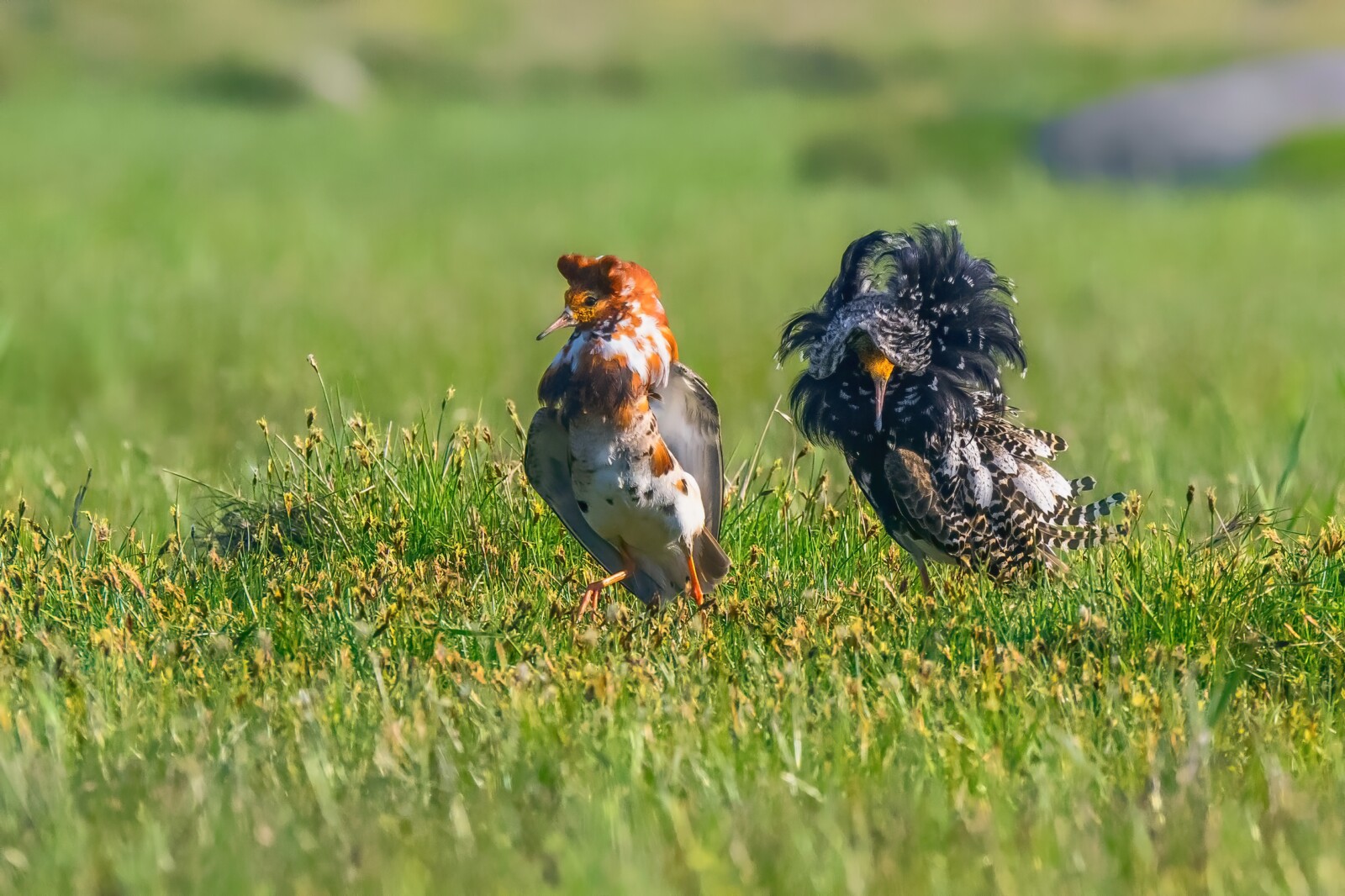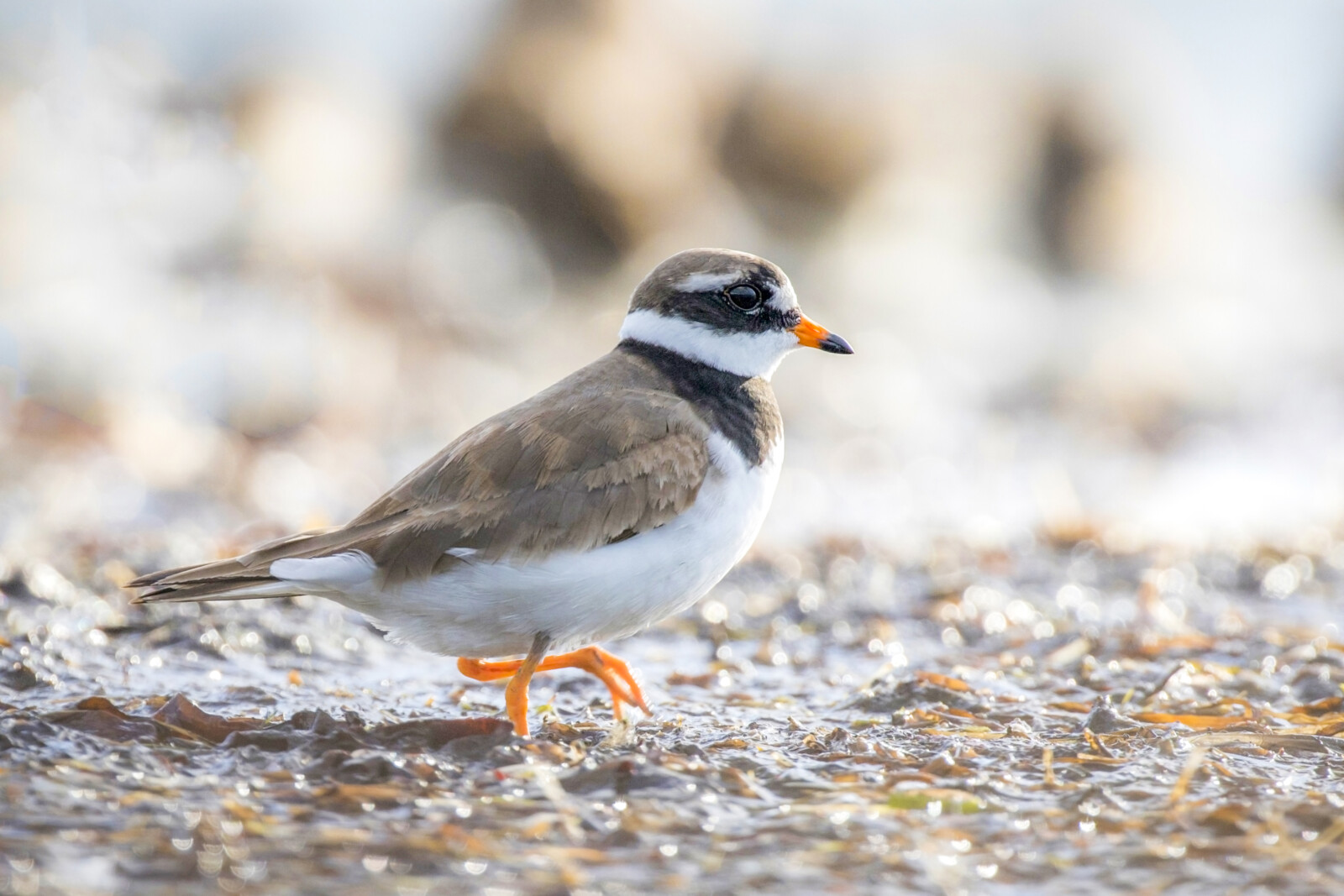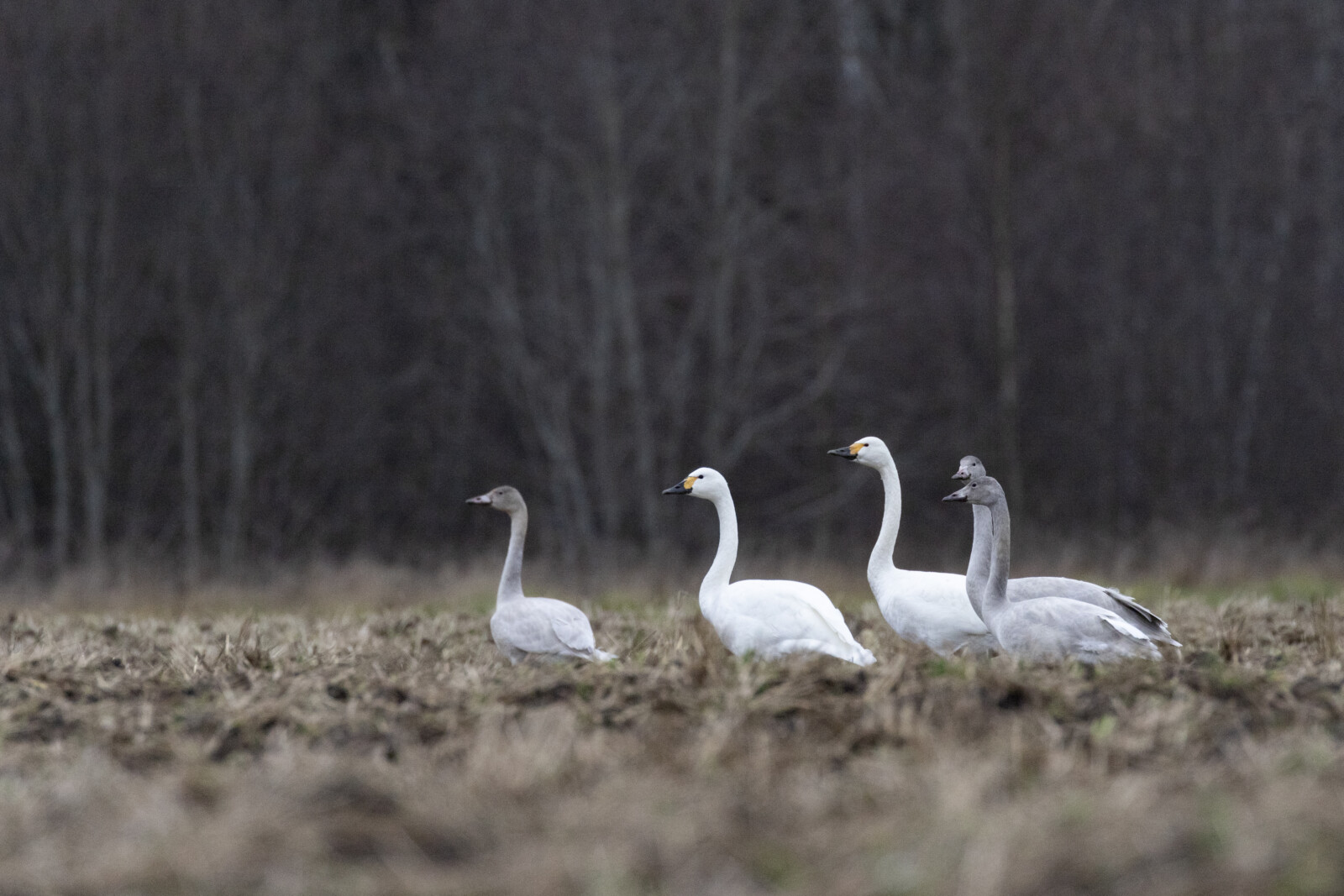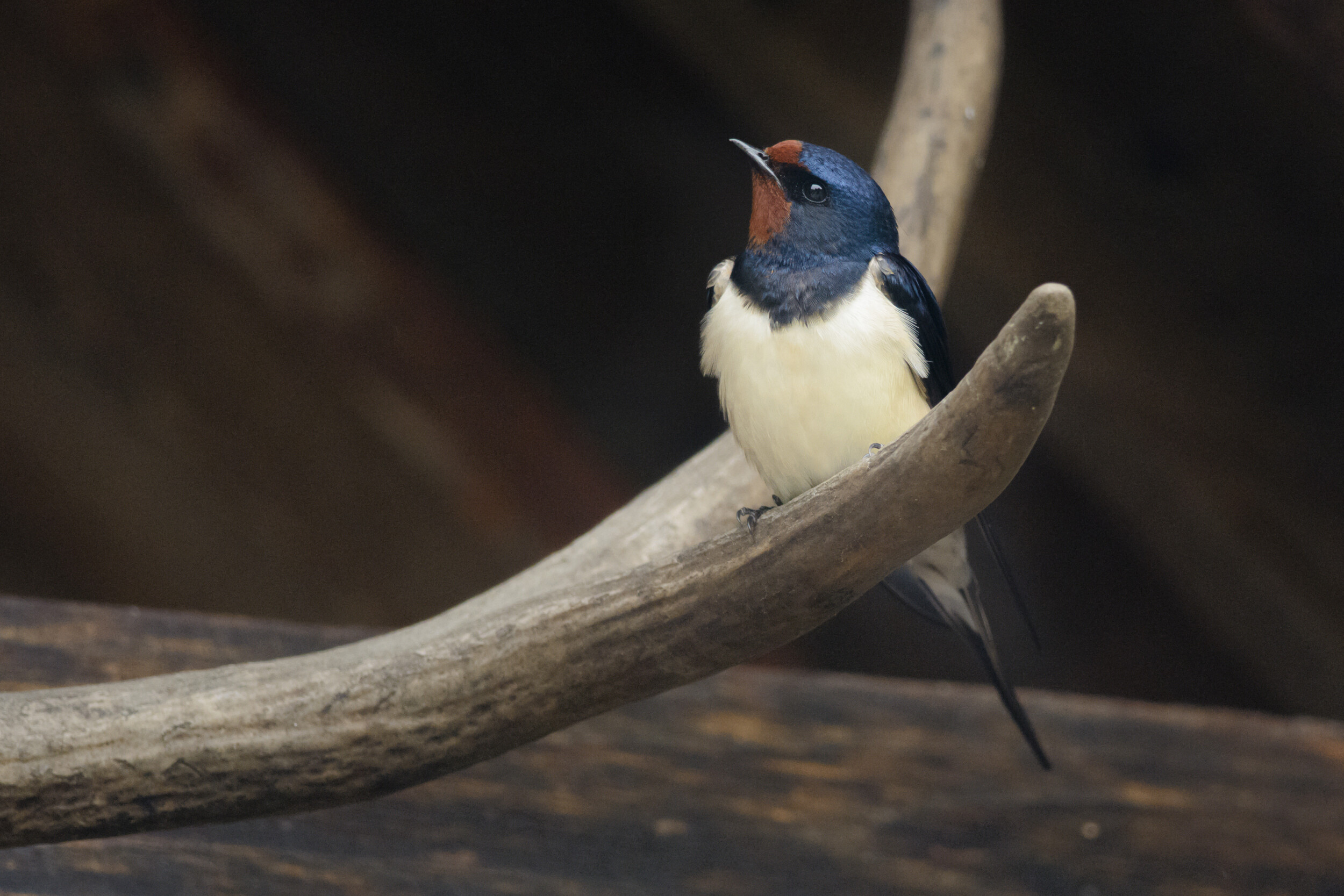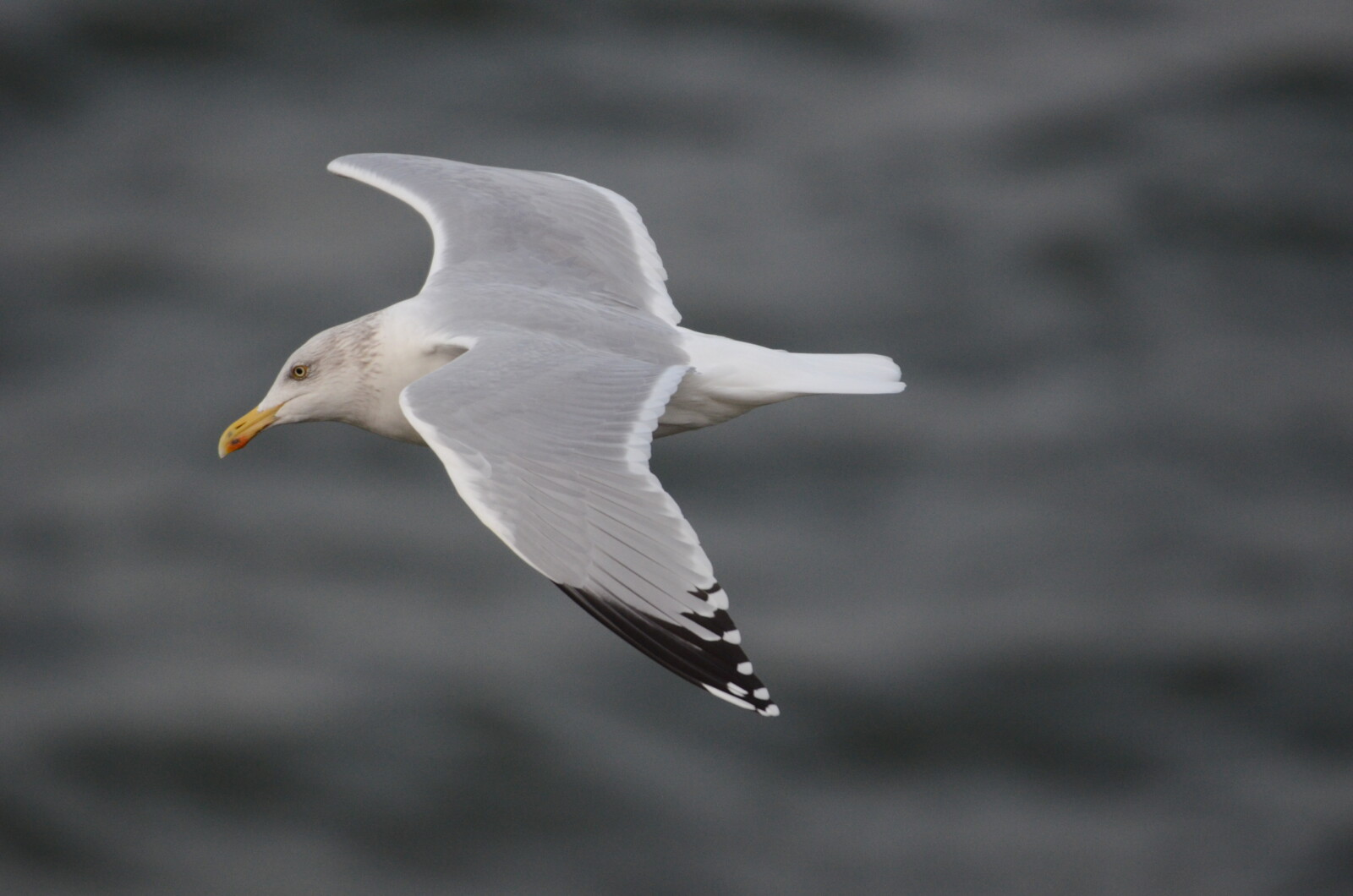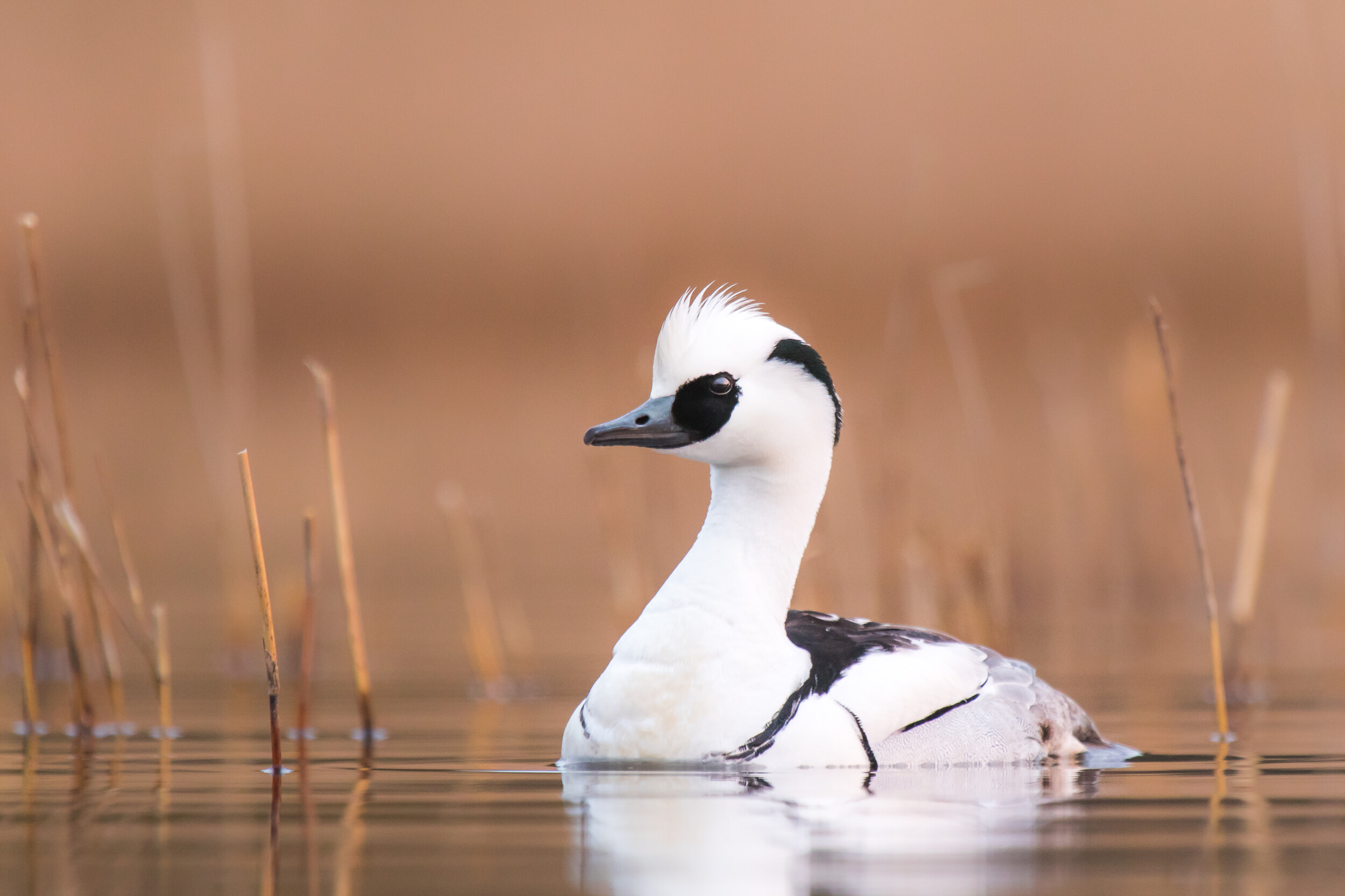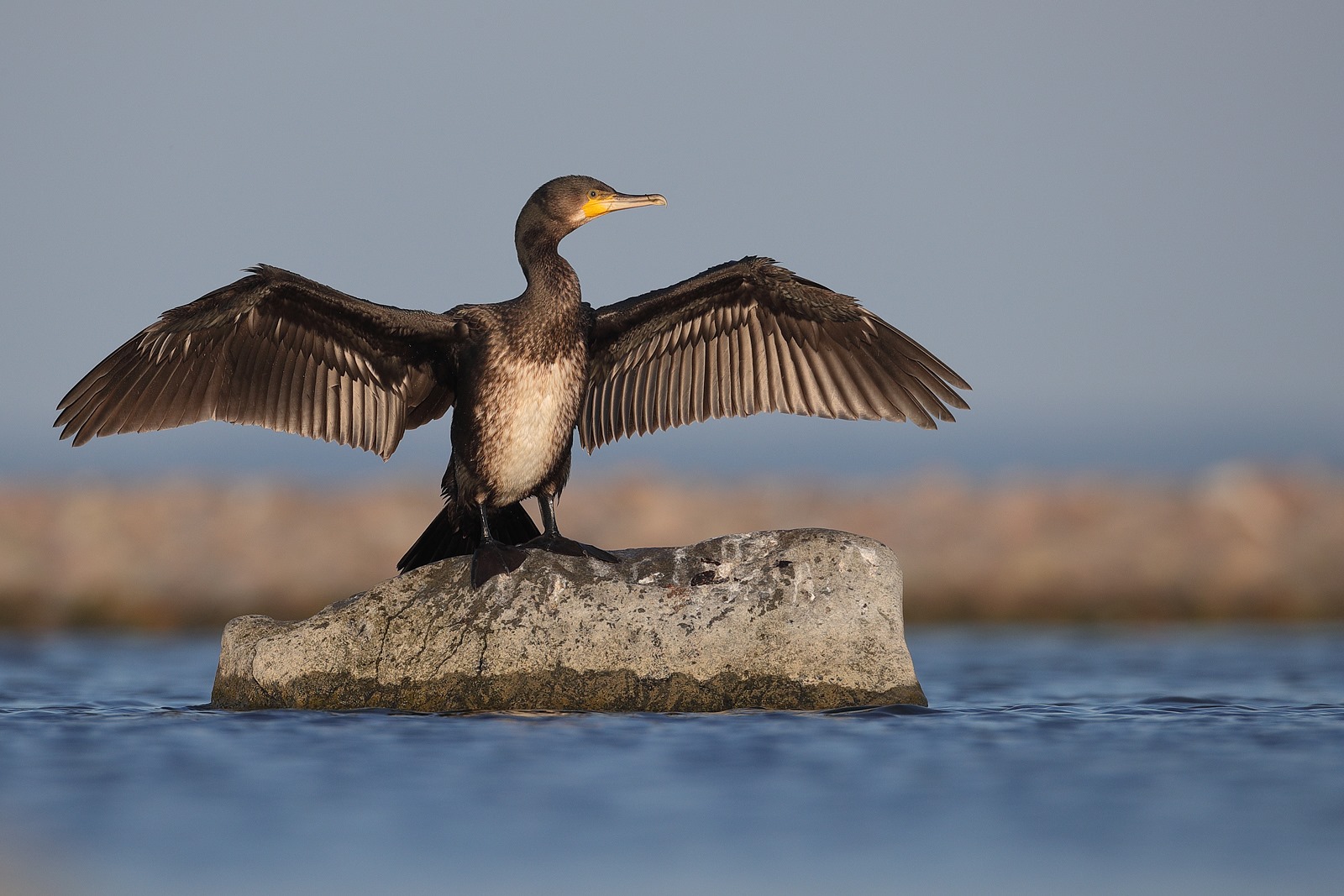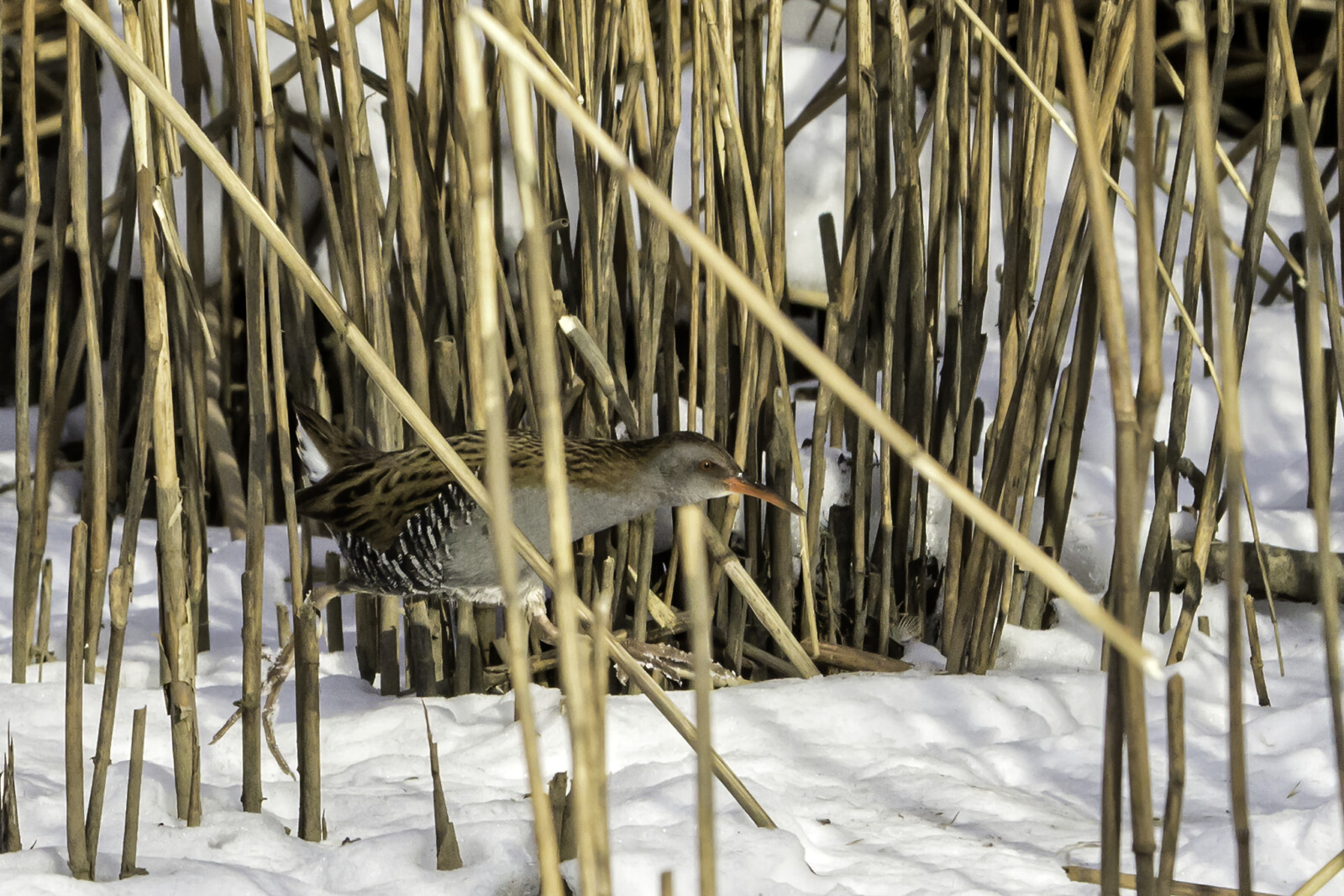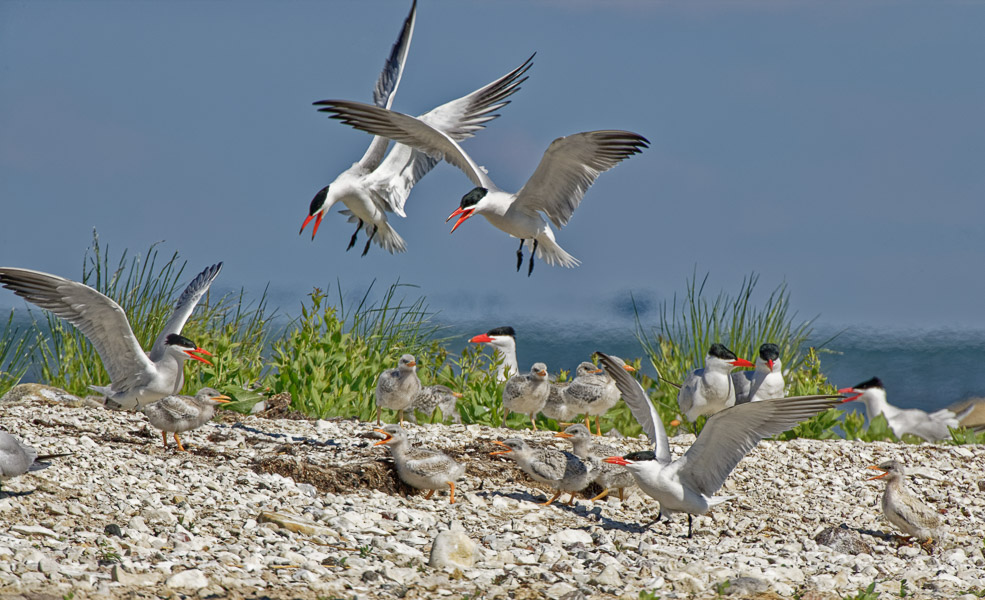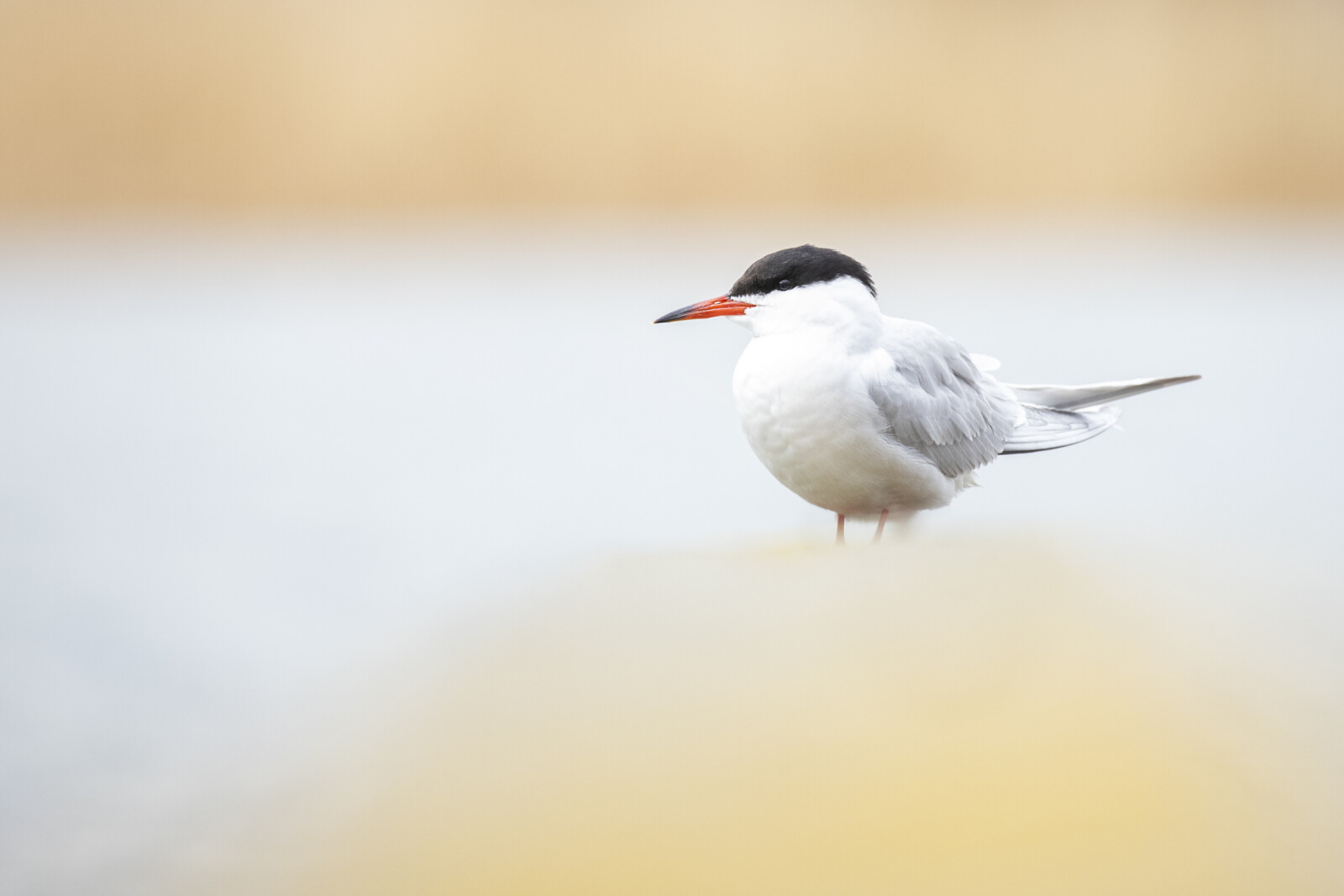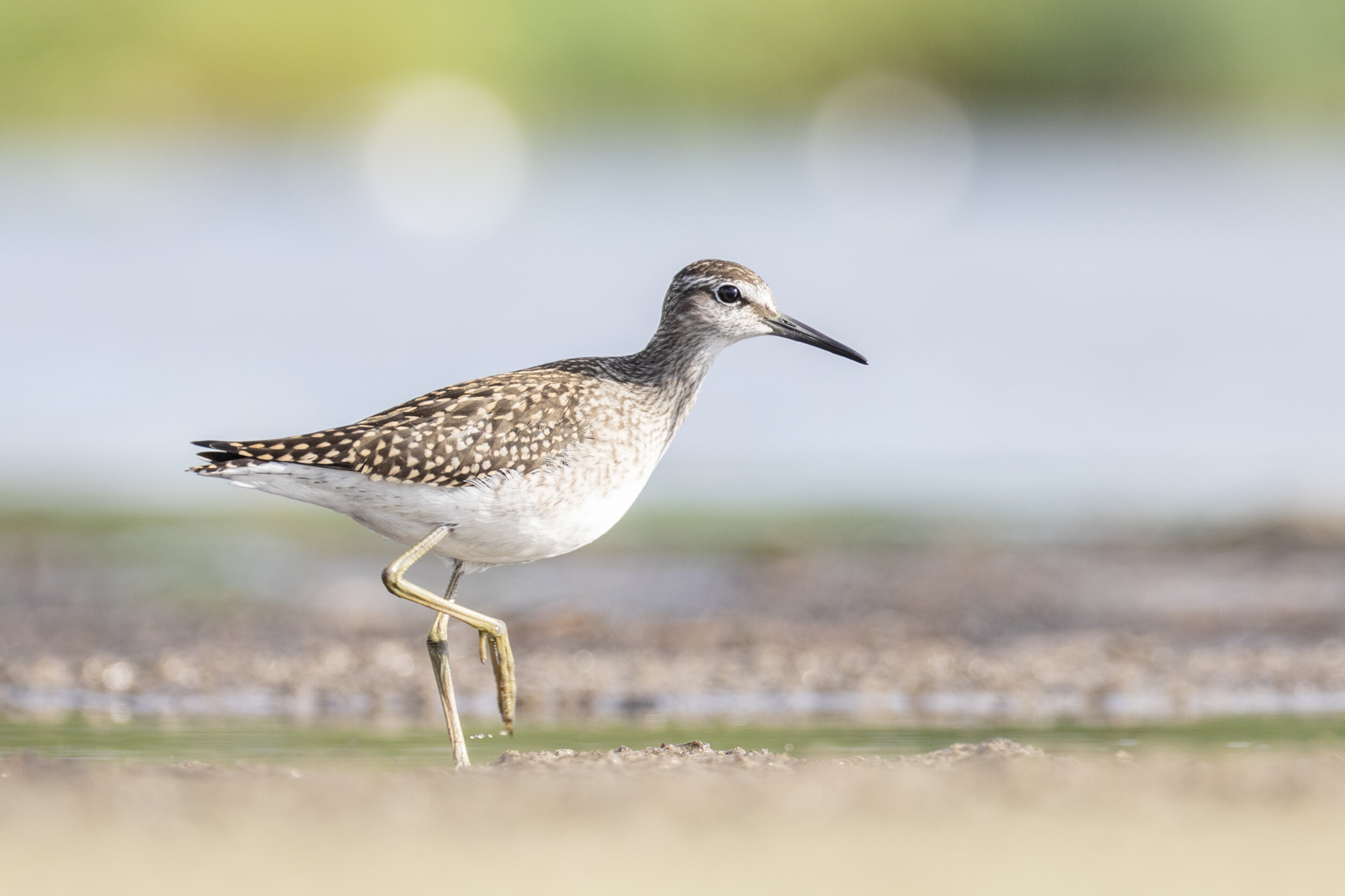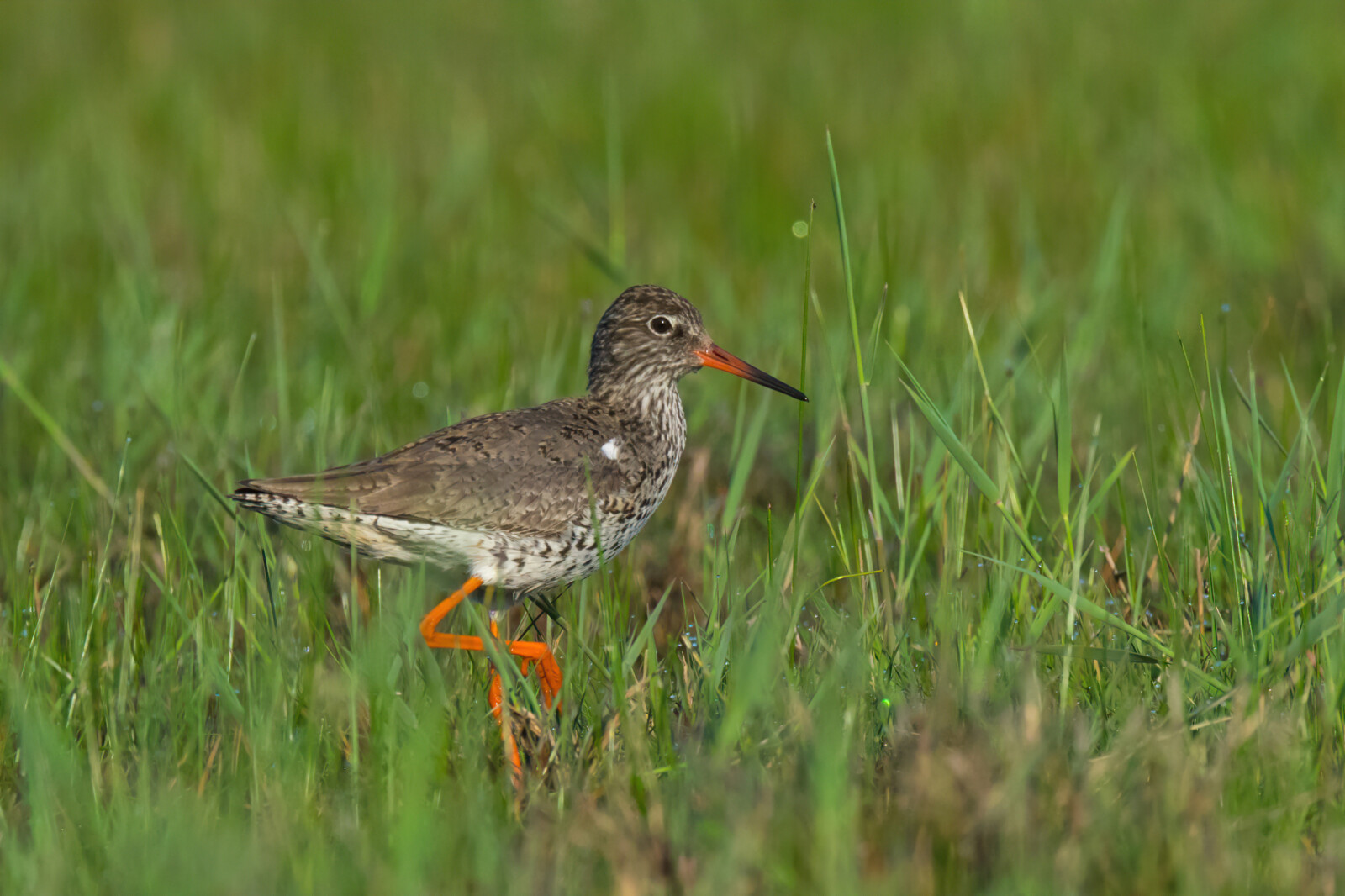Kiideva viewing platform
The Kiideva viewing platform was created at the initiative of the local community and is positioned in the little harbour. Kiideva Beach is one of the main stopovers for Northern swans in early spring by Matsalu Bay. Bird lovers should visit the Kiideva observation from early spring to mid-summer.
A few Western marsh harrier often glide over the overgrown coast. The best area to listen to reed bird songs is on Matsalu’s north coast. From late spring to mid-summer, you can often hear great reed warblers singing here, while flocks of eye-catching bearded reedlings bustle about in the shade of the reeds.
- All
- A
- B
- C
- D
- E
- G
- H
- L
- M
- N
- R
- S
- T
- W
The Northern pintail is a common migratory bird in Matsalu Bay and the Silma Nature Reserve. The bays here are shallow, which provides excellent feeding possibilities for these dabbling ducks.
The Haeska birdwatching tower near Matsalu offers the best view of Northern pintails. Up to 5000 birds can be seen here during their spring migration in April. Another important migratory stopover area for Northern pintails is located in Noarootsi on Tahu Bay. Northern pintails stop on Lääne County’s inner bays in greater numbers in the spring, then again in the autumn in August and September.
The Northern shoveler is an uncommon breeding and migratory bird in Lääne County. It can be seen from April to October. Although the Northern shoveler is a frequent migratory bird in Matsalu and Haapsalu bays, its population remains modest in comparison to most other dabbling ducks. Birds can often be spotted from the observation towers of Haeska and Keemu, as well as Cape Puise.
They primarily nest on the islets of Matsalu, Hullo and Väinameri.
The Eurasian teal is an uncommon breeding bird and a common migratory bird in Lääne County. Eurasian teals can be seen in numerous locations near Matsalu and Haapsalu bays. Eurasian teals that stop on their migration frequently stop at water puddles on the beach meadows.
Eurasian teals gather in large numbers on Haeska’s coast during the spring and autumn. They are also frequently seen stopping in Tahu Bay in Noarootsi.
Nesting Eurasian teals can be found on the beach meadows of Matsalu and Noarootsi. They also breed in small numbers near the ponds of the Marimetsa Bog in Lääne County.
The Eurasian wigeon is a common migratory bird in Lääne County; however, they don’t breed here. Matsalu and Haapsalu bays have by far the most numerous dabbling ducks in spring and autumn. In the spring, Eurasian wigeons enjoy stopping at Matsalu’s flooded-meadows.
The largest migratory flocks of Eurasian wigeons can be seen from the Haeska birdwatching tower. In the autumn, thousands of Eurasian wigeons stop in Haapsalu’s Tagalaht Bay and may be seen from the Haapsalu beach promenade.
The mallard is a very common breeding and migratory bird in Lääne County. It can be found in woodland ditches and wet hay fields, although the most common habitat is shallow inland bays.
In Matsalu National Park, mallard ducks can be found wherever there is even a small body of water.
The garganey is an uncommon breeding and migratory bird in Lääne County. Compared to other dabbling ducks, its numbers are significantly lower.
In Lääne County, garganeys nest primarily in beach meadows. Birds that stop during their migration can be found in inner bays, flooded-meadows and even ponds in the manor park. Garganeys can be observed best in Haeska and Cape Puise as well as from the birdwatching tower in the Silma Nature Reserve on the Kirimäe Peninsula.
The gadwall is a common migratory and breeding bird in Lääne County. The birds build their nests in the reed beds that surround Matsalu and Haapsalu bays as well as on sea islands with higher vegetation.
Gadwalls can be seen practically anywhere near Matsalu and Haapsalu bays. During autumn migration, it is most common at Haapsalu’s Tagalaht Bay, where up to 1000 birds stop in September and October.
The greater white-fronted goose is a common migratory bird in Lääne County, both in spring and autumn. In the early mornings and evenings, the birds stop in the fields or feed in the beach meadows. Birds rest throughout the day and night, but only in bays and flooded-meadows.
In Matsalu National Park, the greatest number of greater white-fronted geese appears during April when flocks of thousands of birds can be seen. It’s good to observe them from the Haeska and Keemu observation towers or Rannajõe viewing platform. Thousands of greater white-fronted geese also stop at Saunja and Tahu bays in the Silma Nature Reserve.
The greylag goose is a common breeding and migratory bird in Lääne County’s coast and coastal lakes. In the spring, the newly arrived birds quickly begin nesting in the reed beds surrounding the Matsalu and Haapsalu bays as well as the lakes of Noarootsi. Several pairs of greylag geese nest on the islets of Väinameri.
Greylag geese create larger flocks throughout the second half of the summer, specifically in July and August. At that time, the flocks of geese here consist almost exclusively of greylag geese. They can be seen here until the beginning of October when they are joined by other types of geese that have arrived from tundra areas.
Greylag geese can be seen from birdwatching towers in Haeska, Põgari, Saunja Bay and the Sutlepa Sea.
The bean goose is a common migratory bird in Lääne County in the spring and autumn and can be found in Matsalu and Haapsalu bays as well as in the fields nearby. In most circumstances, bean geese socialise with their more numerous close relatives, the greater white-fronted geese.
Bean geese can be observed from Haeka and Rannajõe observation towers as well as Kirimäe birdwatching tower on Saunja Bay.
The common swift is a very common breeding and migratory bird in Lääne County. As a capable flier, the common swift can be found practically anywhere, but they are most widespread in towns and bigger settlements. The majority of common swifts in Lääne County are found in Haapsalu, where they can nest in the ventilation vents of panel buildings. During the migration, you may also encounter the common swift on the coast.
In late July and August, you can observe the autumn migration of common swifts at Cape Puise or Cape Põõsaspea.
The grey heron is a common migratory and a locally widespread breeding bird in Lääne County. These birds can be spotted near bodies of water all over Lääne County. However, they are most active in Matsalu and Haapsalu bays, where dozens of birds gather to feed. Feeding grey herons can be seen from birdwatching towers near Matsalu Bay or the Silma Nature Reserve.
Estonia’s largest grey heron breeding colony, with over 300 pairs, is located in Lääne County, near the Laikmaa Museum. The grey heron breeding colony can also be seen in the Matsalu manor park.
The tufted duck is a common breeding and migratory bird in Lääne County. Tufted ducks can be observed in Matsalu and Haapsalu bays as well as the Sutlepa Sea. The most common sightings of these birds occur between April and September.
Tufted ducks nest in reed beds and on small sea islands.
The greater scaup is a common migratory bird in Lääne County. They are best to observe in the spring, from April until mid-May, when tens of thousands of birds flock to Väinameri to feed. The best place to see greater scaups on Lääne County is from Cape Puise, where over 40,000 birds have been recorded stopping around the peninsula.
During the autumn migration, greater scaups have smaller stopping flocks in Lääne County, although a large migration can be seen in September near Cape Põõsaspea.
The Eurasian bittern inhabits reed beds that grow in shallow sea bays and larger lakes in Lääne County. The majority of Eurasian bitterns breed in the reed beds of Matsalu’s inner bay (approximately 25 pairs) and the Silma Nature Reserve (up to 10 pairs).
As a reed-dwelling bird, they are rarely seen, but they are vocal in the spring, from March to May. Their call, similar to blowing into a bottle, can be heard in Matsalu, including on the Penijõe hiking trail and the Silma Nature Reserve near Saunja Bay and the Sutlepa Sea. Eurasian bitterns vocalize most actively in the morning and in the evening.
At Matsalu Bay, the barnacle goose is one of the most common migratory birds in April to mid-May and September to October. Over 100,000 barnacle geese stop in Matsalu each spring.
The beach meadows of Haeska, Keemu and Põgari-Sassi host the greatest flocks of barnacle geese. Thousands of barnacle geese also stop at the Saunja and Tahu bays in the Silma Nature Reserve.
The common goldeneye is a common migratory, breeding and wintering bird in Lääne County. In spring and autumn, a large number of common goldeneyes visit Matsalu and Haapsalu bays. Nesting common goldeneyes can be found on raised bog ponds, manor ponds and woodland lakes. Common goldeneyes typically look for a nesting site in an old black woodpecker’s nest hollow.
In winter, common goldeneyes gather in big flocks along the unfrozen sea coast. The most important wintering areas of common goldeneyes in Lääne County are located around Cape Põõsaspea. Occasionally, nearly a thousand birds winter here.
As in other parts of Estonia, the common buzzard is the most common bird of prey in Lääne County. Common buzzards can be found lurking on power poles and at the tops of shrubs and hovering in the skies across Lääne County. They are especially common in the mosaic cultural landscape, which combines small groves with agricultural landscapes.
Common buzzards are most commonly seen between March and October, but dozens of them also stay to winter in Lääne County.
In Lääne County, there are two subspecies of dunlin: alpina, an extremely common migratory bird, and Southern dunlin, an uncommon breeding bird.
Alpina, which breed in Arctic regions, are common migratory birds along the coast of Lääne County. They are frequently seen in flocks of hundreds of birds in May and from July to September. They are good to observe from the Haeska birdwatching tower, the parking area near Põgari-Sassi beach meadow, or Cape Puise. Alpina are also common during migration at Riguldi Beach and Vormsi on Cape Austergrunne.
The second subspecies of dunlin, the Southern dunlin, nests on the beach meadows of the Matsalu and Silma nature reserves. Matsalu is the most important breeding location for Southern dunlins in Europe. The Haeska tower and the car park at the edge of the Põgari-Sassi beach meadow are ideal viewing spots.
The ruff is a common migratory bird on the coast of Lääne County. Few ruffs nest in Matsalu’s flood-meadows and beach meadows.
The ideal time to see ruffs is between the end of April and the beginning of May, when hundreds of ruffs gather on the beach meadows of Matsalu National Park and Silma Nature Reserve. In Matsalu, the best spots to see the ruff are Haeska and Tahu beach meadow in Noarootsi.
The ringed plover is a very common migratory bird and a common breeding bird along the coast of Lääne County. Matsalu National Park’s low-grass beach meadows provide an important nesting habitat for these birds. Ringed plovers can be found in a variety of locations within Matsalu National Park between March and October. The observation towers at Keemu and Haeska as well as the parking area of the Põgari-Sassi bus stop provide good viewing opportunities. Ringed plovers are most commonly observed at Põgari-Sassi beach meadow and Riguldi Beach in Noarootsi during their migration.
The Western marsh harrier is common everywhere in Lääne County, where there are reed beds ideal for nesting. It breeds most commonly around Matsalu Bay and in the Silma Nature Reserve.
In Matsalu National Park, the Western marsh harrier is frequently spotted from Keemu, Suitsu and Haeska observation towers. It is also good to observe the Western marsh harrier from the observation towers near the Sutlepa Sea.
The hen harrier is an uncommon migratory bird in Lääne County and only some individuals stay here for the winter. Migrating hen harriers can be seen searching for prey in fields and flood-meadows, but they occasionally glide over reed beds.
The observation tower at Rannajõe provides a good view of hen harriers. In September and October, you may see their small-numbered migration in Cape Puise.
Matsalu and Haapsalu bays in Lääne County are vital feeding grounds for tundra swan throughout their migration. In the spring and autumn, almost one-third of all European swans stop at these two wetlands.
The spring migration of tundra swans is most frequent in early and mid-April, while the autumn migration begins at the end of September and lasts until October.
The whooper swan is an uncommon breeding and a common migratory bird in Lääne County. The whooper swan stops most frequently in Matsalu and Haapsalu bays during spring and autumn. During early spring, while the inner bays are still partially frozen, loud whooper swans frequently visit the fields to graze.
The greatest spots to see whooper swans are from the Haeska and Keemu observation towers as well as the Haapsalu Promenade. The wintering whooper swans are most active around the coast of the Noarootsi Peninsula and Vormsi Island.
The mute swan is the most common of the waterfowl breeding among the reed beds of Matsalu and Haapsalu bays and on small sea islands. Mute swans can be observed in large numbers in the spring and autumn, when thousands of individuals converge to eat.
The Haeska, Keemu bird observation towers and Tahu and Saunja birdwatching towers in the Silma Nature Reserve provide the best views of mute swan migration stopovers.
The Western house martin is a very common breeding bird and migratory bird in Lääne County. It nests wherever there are suitable eaves for making a nest. In Matsalu National Park, Western house martins nest in considerable numbers near Port Puise and Port Keemu. In autumn, between the end of August and the beginning of September, you can watch the countless Western house martin migrations from the Cape Puise observation platform.
The great egret is now a common migratory bird and an uncommon breeding bird in Lääne County. This Southern heron is a recent newcomer in the bogs of Lääne County, having only become common in the early twenty-first century. Now the great egret outnumbers its close relative, the grey heron, in many regions.
Great egrets can sometimes be found in Matsalu and Haapsalu bays even in flocks of several hundred birds. They’re good to observe from the Haeska birdwatching tower, the parking area at Põgari-Sassi beach meadow, and Sutlepa Sea and Tahu Bay observation towers in Noarootsi. Their breeding colony is also found in the reed beds of the Sutlepa Sea and birds also breed in the grey heron colony near the Laikmaa museum.
The common snipe is a common migratory and breeding bird in Lääne County. Migrating common snipes can be found stopping in beach meadows, seaweed and algae banks and even damp pastures. The common snipe is a widespread bird species in Matsalu. Common snipes can be seen in Põgari and Haeska as well as Riguldi Beach and Tahu Beach meadow in Noarootsi. It’s good to observe common snipes flying on the Penijõe or Tuhu Bog hiking trail during spring evenings.
The common crane is a common breeding and migratory bird in Lääne County. The loud mating call of common cranes can be heard already in early March. They build their nests in wet areas to help protect it from predators. However, during the breeding season, you can see common cranes feeding in the fields.
In September, birds that breed in Finland arrive in Lääne County alongside local cranes. Large migrating flocks of common cranes can be spotted in the fields at that time. However, viewing common cranes’ nocturnal flight on autumn evenings provides a unique spectacle. Thousands of common cranes make their way to Matsalu and Haapsalu bays before dusk to spend the night. On some evenings, Matsalu Bay can have around 20,000 birds. To watch them, visit Rannajõe or Haeska observation tower.
The Eurasian oystercatcher is a common breeding and migratory bird in the coastal areas of Lääne County. In Matsalu, they can be seen in Haeska, Keemu, Põgari and Cape Puise. During spring and summer, they can be seen on Vasikaholmi beach in Haapsalu and in Cape Põõsaspea near Noarootsi.
The best time to observe Eurasian oystercatchers migrating is between April and August at Cape Põõsaspea.
The sea eagle is a bird of prey that is difficult to stay away from before leaving Matsalu or Haapsalu Bay. When you arrive at the bay and look at the larger rocks, you are likely to see a sea eagle sitting on one of them. In Matsalu, white-tailed eagles are commonly observed in Haeska, Keemu and Põgari as well as Haapsalu’s Tagalaht Bay and Saunja Bay inside the Silma Nature Reserve.
In winter, when the inner bays freeze, wintering white-tailed eagles in Lääne County head to coastal areas with open water and resting waterfowl.
The barn swallow is a common and widespread breeding and migratory bird in Lääne County. In Matsalu National Park, they nest near farms and old boathouses. Barn swallows nest most commonly around cattle barns.
Barn swallows flock together in the evenings at the end of the summer to spend the night in the reed beds of Matsalu and Haapsalu bays. Thousands of individuals can sit on the reeds before dusk. In September, our national bird can be seen migrating, and the best view is on Cape Puise.
The red-backed shrike is a common breeding bird in Lääne County. It can be found both in farmland with shrubs and in coastal juniper patches. Red-backed shrikes can be spotted in a variety of locations in Matsalu. They nest in large numbers on the Puise Peninsula, where the birds can be seen nesting in the roadside shrubs.
The European herring gull is a common breeding and migratory bird in Lääne County. Wintering birds flock largely around ports, particularly in Port Dirhami.
European herring gulls are more common in Matsalu, particularly around small sea islands where they can breed. Therefore, they are most visible in Cape Puise and Port Keemu. However, these birds don’t go unnoticed at other coastal observation locations in the county.
The common gull is a common breeding and migratory bird in Lääne County. Wintering birds follow fishing vessels across the open sea and frequently rest in Port Dirhami.
Common gulls breed primarily on sea islands in Matsalu National Park, although several birds have found suitable nesting sites on the thatched roofs of old farm buildings or boathouses. One of the largest herring gull colonies is found in Kakrarahu, near Cape Puise. Since the 1970s, extensive studies of common gulls have been conducted there. That is why you may notice a white plastic ring with black letters around the leg of many common gulls in Matsalu. Those birds are from the Kakrarahu breeding colony.
The great black-backed gull is a common seagull species along the shore of Lääne County, but relatively uncommon here compared to rest of the world. Great black-backed gulls can be found on the seashore, inland bays and coastal lakes. In Matsalu National Park, they can be found at Keemu and Puise ports as well as Haeska and Põgari-Sassi. Great black-backed gulls are also common in Haapsalu and the Noarootsi region.
They often sit on large rocks, where they can be observed for a long time.
The black-headed gull is a very common breeding and migratory bird in Lääne County but an uncommon winterer. Black-headed gulls nest in huge flocks along the shores of Lääne County. The county’s largest breeding colony, with over a thousand nests, is found on the banks of Haapsalu Eeslaht Bay.
Cape Põõsaspea offers the best view of the black-headed gull migration.
Savi’s warbler is a common but relatively local reed warbler in Lääne County. The species’ primary breeding grounds are Matsalu National Park (about 3000 pairs) and Silma Nature Reserve (300–500 pairs), where it thrives in mosaic reed habitats that grow in water. The chirping of Savi’s warbler is extremely loud at dusk. The best time to hear their song is between late April and mid-June. The greatest spots to listen to birds in Matsalu are Port Kiideva, the mouth of the Kasari River and the Sutlepa Sea observation towers near Noarootsi.
The smew is an uncommon migratory and wintering bird in Lääne County. The majority of spring migration occurs between mid-March and early May, followed by autumn migration in October and November. Smews who rest on their journey prefer to feed in inner bays and, to some extent, bigger lakes. In Matsalu, the smew is most likely to be seen from the Haeska or Keemu birdwatching towers. They are also visible from the Haapsalu Promenade and the Saunja Bay observation towers. The majority of wintering smew are found along the northern coast of Vormsi.
The goosander is a common migratory, wintering and breeding bird in Lääne County. Goosanders make frequent migratory stops in Matsalu and Haapsalu bays in the early spring and late autumn. They are typically the earliest waterfowl to gather in open water areas and the last to go when the bays freeze. It is good to observe goosanders that take a break during their migration in Puise or Keemu. In the autumn months, between October and November, hundreds of goosanders gather in Tagalaht Bay in Haapsalu. Wintering goosanders are more common at Cape Põõsaspea and Port of Dirhami.
The white wagtail is a widespread breeding bird in Lääne County as well as a common migrant. As an adaptable species, it may be found practically anywhere in Matsalu and other parts of Lääne County. However, it is most common in villages, where the structures provide plenty of nesting opportunities. Feeding birds are frequently spotted in beach meadows or along the coast.
The Western yellow wagtail is a breeding bird that may be found on Lääne County’s beaches and flood-meadows as well as on sea islands with reeds. It is also a common migratory bird along the coast. Western yellow wagtails can be spotted in Matsalu on the Penijõe hiking trail, at the Keemu and Haeska birdwatching towers, and around Cape Puise. Western yellow wagtails are also common along the shore of the Noarootsi Peninsula.
Migrating Western yellow wagtails can be found in huge numbers on Cape Puise and Cape Põõsaspea.
The Eurasian curlew is an uncommon breeding and migratory bird in Lääne County. This nesting species is unfortunately declining in Lääne County. They have also been found nesting in cultivated grasslands and meadows. A few pairs also live in our bogs. Eurasian curlews that stop throughout their migration frequently eat on beach meadows.
In Matsalu, you can often see the Eurasian curlew at Haeska, Põgari and Rannajõe and on the Penijõe hiking trail. Cape Põõsaspea offers the best view of Eurasian curlew migrations in the spring and autumn.
The great cormorant is a common migratory and breeding bird with a local distribution in Lääne County. In the spring and autumn, great cormorants can be seen in big flocks in Haapsalu and Matsalu bays. In Matsalu, it is best to watch them from Keemu observation tower or Cape Puise. The great cormorants are also abundant along the Kasari River during the spring fish spawning season.
While there were hundreds of pairs of great cormorants nesting on the coasts of Matsalu National Park around the turn of the century, their numbers have since declined. One reason is the large number of white-tailed eagles, which prey on great cormorant chicks in the nesting colony. This is why there are so few great cormorants nesting in Matsalu areas. However, the cormorant nesting colony can be seen from the observation tower overlooking the Sutlepa Sea.
The great crested grebe is a common breeding and migratory bird in Lääne County. Migrating great crested grebes tend to reside in inland bays, with smaller numbers observed at bigger lakes and the open sea.
The great crested grebe is best seen in the spring, between April and May, from the Haapsalu Promenade. At that time, the great crested grebe’s impressive courtship ritual can be observed. Saunja Bay and the Sutlepa Sea also have a large population of great crested grebes, with dozens of couples nesting. In Matsalu, they may be seen near Cape Puise or from Keemu observation tower.
The water rail is a common breeding bird in Lääne County and an uncommon winterer. The water rail is a secretive reed bird that is difficult to see, but its voice can be heard in many places across Lääne County. Water rails can be heard in Matsalu from various observation towers, including Rannajõe and Penijõe. The greatest place to enjoy the water rail concert is from the bird towers of the Sutlepa Sea near Noarootsi.
During the winter months, water rails are often observed around the Haapsalu water treatment plant.
The whinchat is a common migratory and breeding bird in Lääne County. In Lääne County, it is primarily found in beach meadows with reeds and beach pastures with junipers and bushes. The whinchat also breeds in big numbers in the mosaic landscape, where bushes can be found in the fields.
The whinchat can be seen in Matsalu from late April until early September. They are a widespread bird species here and are commonly found around the Puise Peninsula, Penijõe hiking trail and Keemu Port. During the spring migration in early May, many whinchats stop in the Spithami village meadow, where dozens of them can be counted.
This is the largest tern, with a wingspan longer than that of the common gull. The beak of the adult is very stout and bright red; most have a dark spot on front of the tip, while the primary feathers are dark in all plumages. The legs are black with a dark head and a face mask.
The common tern is very similar to the Arctic tern. The common tern has a longer beak, legs, head and neck and slightly bigger wings. In summer, the beak is orange-red with a black tip, the underside is a pale grey with little to no contrast to the white cheeks, the tail feathers do not reach beyond the wing tips, the primary feathers are white below and the rear edge of the wing is widely or disjointedly darker. In winter, the forehead and underside are white, the front edge of the wing bend is dark and the beak is entirely black.
The Arctic tern is similar to the common tern but with a smaller body, a shorter beak, head and neck, a longer tail, shorter legs and narrower wings. In the summer, an adult bird’s beak is dark red, the throat, breast and belly are a pale grey and long tail feathers hang over the tips of the rectrices when the bird is standing. The top half of the wings is uniformly light grey, and all flight feathers are whitish.
In contrast to the common redshank, which has a more slender build, longer legs and a longer, finer beak with a very small downward bend at the tip, the base of the beak is only red on the lower part of the beak. A white eyebrow is clearly visible in winter and juvenile plumage. The white stripe continues at the preen gland area as a narrow white ‘crack’. The male bird is completely black in summer, only the top part is slightly dotted and the legs are also black. The female bird has a lot more white dots on the belly and sides. In winter, both adult birds are light grey on the top side and pure white on the underside, the front of the neck and ‘face’ are dirty white. The juvenile bird’s underside is uniformly streaked, and the edges of the large coverts and tertials are finely streaked. The legs are red.
Similar to the green sandpiper but lighter brown in appearance, with larger spots on the top side, longer legs, a narrow-striped tail and sparse stripes on the chest and sides. A pale brow stripe extends behind the eye and the legs are yellowish-green. In flight, the wings’ pale undersides are visible and the toes extend entirely past the tip of the tail. In the summer, the top part of the adult bird is irregularly marked with little white and cream spots, whereas in the winter, the plumage is greyer and more uniform.
The legs and base of the beak are red, the top side is brownish, the chest is striped, the sides are spotted, there is a bright ring around the eye and short eyebrow stripe. During flight, the wide white trailing edge of the wing and the white oblong-triangular preen gland area are visible. In the summer, adult birds have thick, slightly irregular specks and streaks on both the top and undersides; however, in the winter, the top side and breast area are brownish-grey.
The Northern lapwing is a pigeon-sized wader with a stout body and a unique long thin tuft on its nape. The dark top part of the plumage looks slightly green and purple with a metallic sheen, while the underside is white. The wing tips are impressively wide with white feathers below and dark above. In the summer, male birds can be recognised by their longer tufts and pure black throats and faces, while females have shorter tufts and a smaller black mark on the front of their necks that is slightly mixed with white. In the winter, the feathers of adult birds at the front of the neck and beneath the chin are white, while the top part and covert feathers are slightly cream-coloured at the tips.
